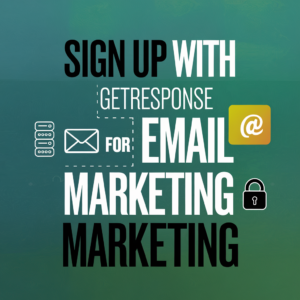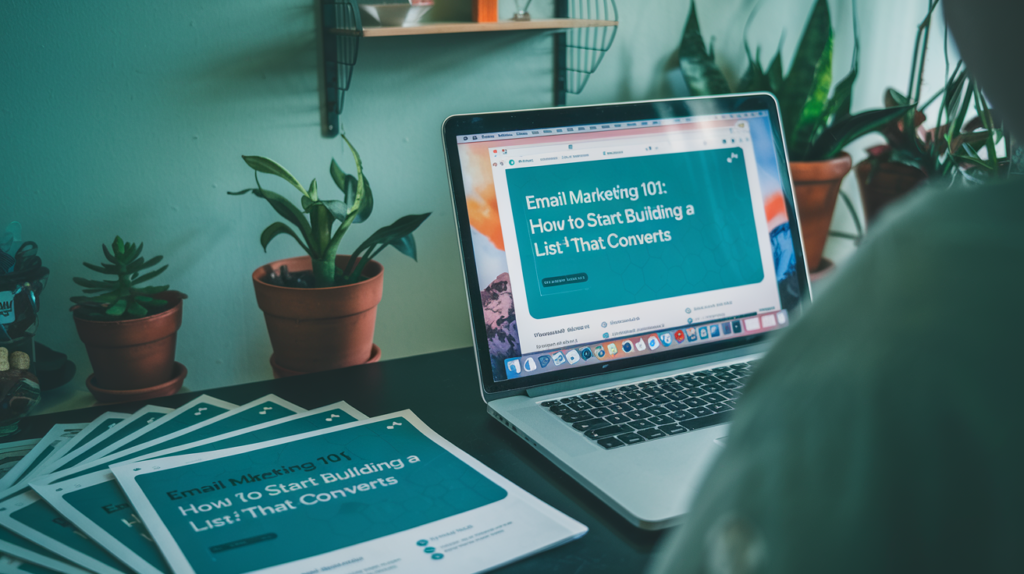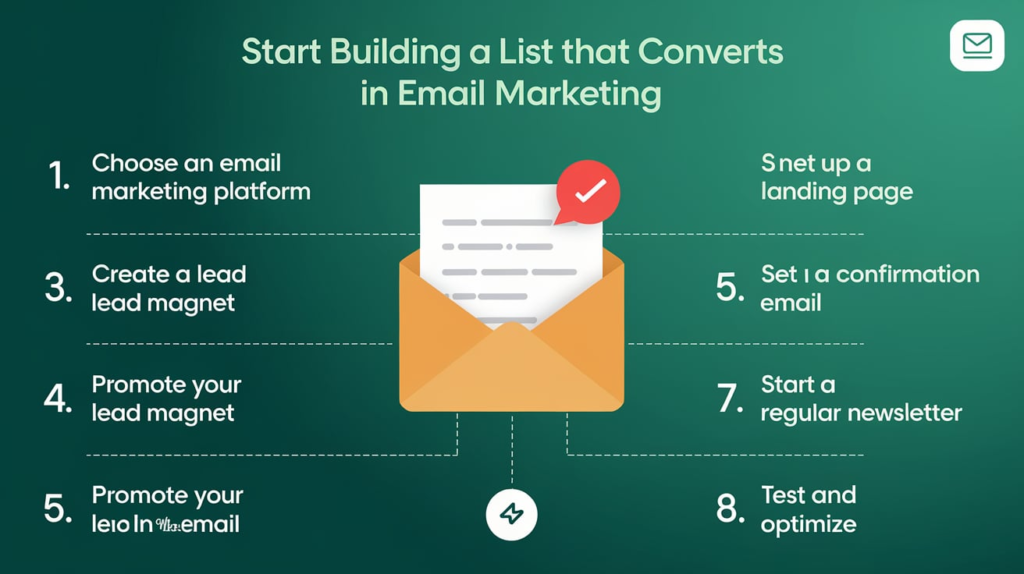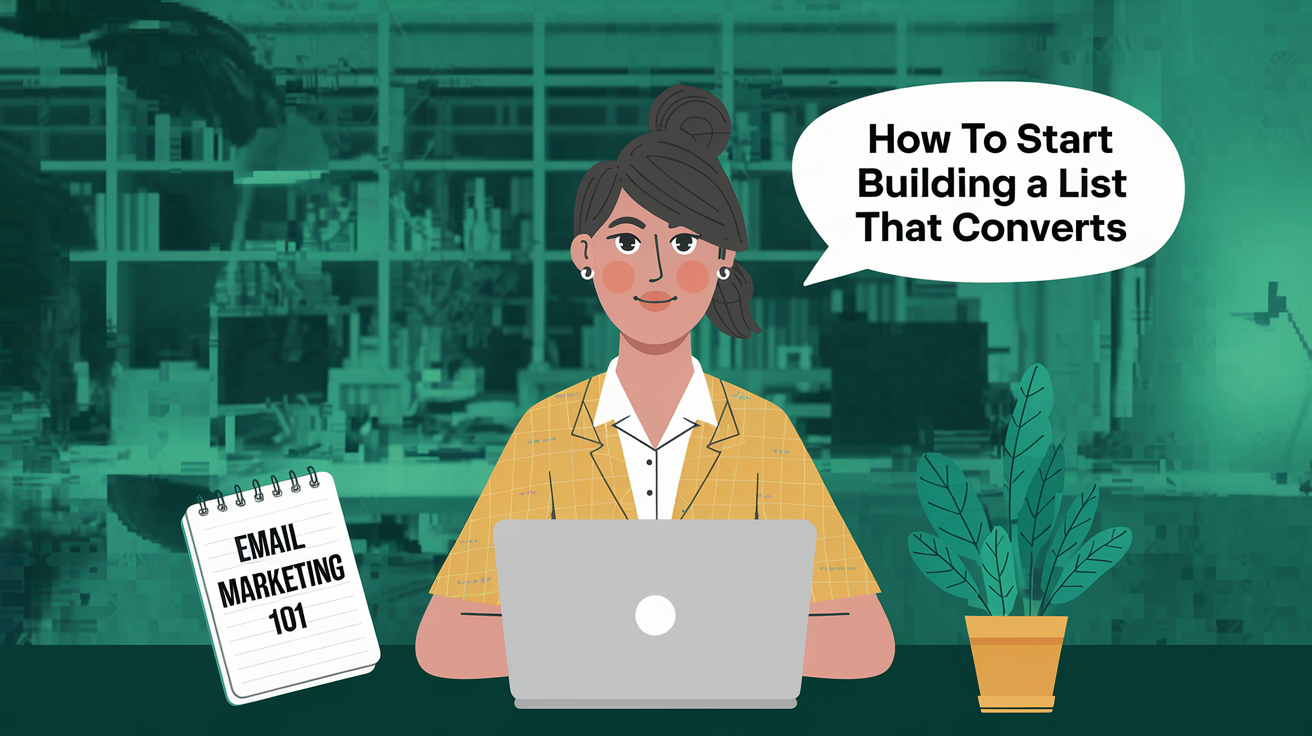In the dynamic world of digital marketing, email remains a powerful tool for connecting with your audience and driving conversions. Whether you’re a small business owner, an online entrepreneur, or a marketing professional, mastering the art of email list building is essential for your long-term success. In this comprehensive guide, we’ll explore the fundamental strategies and best practices to help you build a thriving email list that truly engages your subscribers and generates tangible results.
Email marketing offers a unique opportunity to cultivate and nurture lasting relationships with your target audience. By consistently delivering valuable content, exclusive offers, and personalized messaging, you can position your brand as a trusted authority and foster a loyal community of subscribers who are eager to engage with your products or services. However, the key to unlocking the full potential of email marketing lies in your ability to build a high-quality, actively engaged list of subscribers.

Key Takeaways
- Email marketing remains a powerful digital marketing strategy for connecting with your audience and driving conversions.
- Building a thriving email list is essential for long-term business success, allowing you to nurture relationships and deliver targeted content.
- Mastering the fundamentals of email list building, including lead magnet creation, landing page optimization, and list segmentation, is crucial for achieving a high-converting email subscriber base.
- Leveraging email marketing analytics and metrics can help you continually refine your strategies and maximize the impact of your email campaigns.
- Crafting engaging welcome sequences and maintaining a strong content strategy are key to keeping your subscribers active and engaged.
Understanding the Fundamentals of Email Marketing

In the world of digital marketing, email remains a powerful tool for businesses to connect with their audience and drive valuable conversions. At the heart of effective email marketing lies the principle of permission-based marketing. This approach emphasizes the importance of obtaining explicit consent from recipients before sending any promotional messages, ensuring a mutually beneficial relationship between the brand and the subscriber.
The Role of Permission-Based Marketing
Permission-based marketing is more than just a best practice – it’s a foundational element of successful email campaigns. By respecting the preferences and privacy of your audience, you build trust, increase engagement, and ultimately, improve the overall email marketing ROI. This permission-driven approach not only benefits the recipient but also protects the sender from potential spam complaints and deliverability issues.
Key Components of Successful Email Campaigns
- Compelling subject lines that pique the reader’s interest
- Personalized content that addresses the subscriber’s needs and interests
- Clear and prominent calls-to-action (CTAs) that guide the reader to the desired action
- Mobile-responsive design that ensures a seamless experience across all devices
- Thoughtful segmentation and targeting to deliver highly relevant content
Email Marketing Statistics That Matter
The power of email marketing is undeniable, as evidenced by the following statistics:
- For every $1 spent on email campaign components, the average return is $42 (DMA, 2022)
- Email marketing has an average email marketing ROI of 4,400% (DMA, 2022)
- Segmented email campaigns can generate 58% of all revenue for a business (DMA, 2022)
These figures highlight the significant impact that strategic, permission-based email marketing can have on a business’s bottom line, making it a crucial component of any comprehensive digital marketing strategy.
Choosing the Right Email Marketing Platform

In the dynamic world of digital marketing, selecting the right email service provider (ESP) can make all the difference in the success of your email campaigns. With a vast array of email marketing platforms available, each boasting unique features and capabilities, it’s crucial to find the one that aligns seamlessly with your business needs and goals.
When evaluating email service providers, consider the following key factors:
- Email Automation Capabilities: Look for an ESP that offers robust marketing automation tools, allowing you to create personalized and triggered email workflows that nurture your leads and customers.
- List Management and Segmentation: Efficient list management and advanced segmentation features are essential for delivering targeted, relevant content to your audience.
- Analytics and Reporting: Comprehensive analytics and reporting functionalities will help you measure the performance of your email campaigns, enabling data-driven decision-making.
- Integrations and Scalability: Ensure the platform you choose can seamlessly integrate with your other marketing automation tools and has the capacity to grow with your business as it expands.
By carefully evaluating the capabilities of various email service providers, you can find the one that best fits your email marketing needs and supports your overall digital marketing strategy.
| Email Service Providers | Key Features | Pricing |
|---|---|---|
| Getresponse | User-friendly interface Automation workflows List segmentation Basic reporting1 | Free plan available, paid plans start at $9.99/month |
| Constant Contact | Extensive email templates Advanced list management Detailed analytics E-commerce integrations | Paid plans start at $20/month |
| ActiveCampaign | Powerful marketing automation Lead scoring and segmentation CRM integration Comprehensive reporting | Paid plans start at $29/month |
By carefully evaluating your business requirements and the features offered by various email service providers, you can make an informed decision and choose the marketing automation tools that will best support your email ESP features and drive the success of your digital marketing campaigns.

Creating an Irresistible Lead Magnet
In the world of email marketing, a powerful lead magnet is the key to building a thriving subscriber list. As potential customers willingly exchange their valuable contact information for your irresistible offer, you gain the opportunity to nurture these leads and convert them into loyal customers. Let’s explore the types of lead magnets that captivate, the art of designing an appealing offer, and the various delivery methods to maximize your lead generation efforts.
Types of Lead Magnets That Convert
The most effective lead magnets come in a variety of formats, each catering to the unique needs and preferences of your target audience. Some of the top-performing lead magnet ideas include:
- Exclusive digital downloads, such as ebooks, whitepapers, or checklists
- Opt-in incentives like free trials, discounts, or limited-time offers
- Valuable content upgrades, such as templates, webinars, or video tutorials
- Interactive tools, calculators, or assessments that provide personalized insights
Designing Your Lead Magnet
Crafting an irresistible lead magnet requires a keen understanding of your audience’s pain points and a laser-sharp focus on delivering immense value. Ensure your digital downloads are visually appealing, well-structured, and address a specific need or problem your potential subscribers face. Leverage captivating headlines, clear calls-to-action, and a seamless user experience to drive conversions.
Delivery Methods and Formats
The way you present and deliver your lead magnet can significantly impact its effectiveness. Consider offering your lead magnet in a variety of formats, such as downloadable PDFs, interactive web pages, or even email series, to cater to different learning styles and preferences. Streamline the delivery process by automating the distribution and providing a smooth, hassle-free experience for your new subscribers.
Building High-Converting Landing Pages
Crafting effective landing pages is a critical component of any successful online marketing strategy. These pages serve as the gateway for your potential customers, playing a pivotal role in driving landing page optimization and boosting conversion rate optimization. By mastering the art of building high-converting landing pages, you can unlock the true potential of your digital marketing efforts and turn more visitors into valuable leads and customers.
One of the key elements of a high-converting landing page is the design. A visually appealing and user-friendly layout can significantly impact the visitor’s experience and their willingness to take the desired action. Ensure that your landing page is clean, uncluttered, and focuses the user’s attention on the primary call-to-action (CTA).
Alongside the design, the copywriting on your landing page plays a crucial role in persuading visitors to convert. Craft compelling and attention-grabbing headlines, write compelling copy that addresses the user’s pain points, and clearly communicate the benefits of your offer. Leverage the power of A/B testing to continuously optimize your landing page content and find the most effective messaging.
Additionally, consider incorporating social proof elements, such as testimonials or client logos, to build trust and credibility with your audience. This can further enhance the effectiveness of your landing page and increase the likelihood of conversions.
Ultimately, the key to building high-converting landing pages lies in a combination of strategic design, persuasive copywriting, and ongoing optimization through rigorous A/B testing. By mastering these techniques, you can unleash the true potential of your digital marketing efforts and drive more valuable leads and sales for your business.
Growing Your Email List Through Content Strategy

Crafting an effective content strategy is key to building a thriving email list. By leveraging the power of content marketing, you can attract and retain a loyal audience of subscribers, paving the way for successful email campaigns. Let’s explore the essential tactics that can help you grow your email list through content strategy.
Blog Post Optimization for List Building
Your blog is a goldmine for list growth. Optimize your blog posts to encourage readers to subscribe by incorporating strategic opt-in forms, lead magnets, and content upgrades. Ensure your blog content is valuable, engaging, and tailored to the needs of your target audience.
Social Media Integration Techniques
Integrate your content marketing efforts with your social media presence. Share your blog posts, lead magnets, and other valuable content across various social channels to reach a wider audience and drive more subscribers. Leverage social media platforms to build relationships, provide value, and convert followers into email subscribers.
Content Upgrade Strategies
Enhance your content with exclusive, downloadable resources known as “content upgrades.” These can include checklists, templates, ebooks, or any other valuable digital assets that complement your blog posts. Offer these content upgrades in exchange for an email subscription, creating a mutually beneficial exchange for your audience.
By implementing these content-driven list growth tactics, you can effectively build a thriving email list that drives engagement, conversions, and long-term business success. Remember, a strong content strategy is the foundation for sustainable list growth and successful email marketing campaigns.
Email List Segmentation and Management
In the dynamic world of email marketing, effective list segmentation and management are crucial for driving engagement and conversion rates. By understanding the art of subscriber segmentation, email marketers can tailor their content and offers to the unique needs and preferences of their audience, ultimately fostering stronger relationships and driving more meaningful results.
One key aspect of list management is maintaining list hygiene. This involves regularly cleaning and verifying your email list, removing inactive or invalid addresses, and ensuring that your subscribers remain engaged and interested in your content. By keeping your list clean and up-to-date, you can improve the deliverability of your emails and avoid the dreaded pitfalls of spam complaints and unsubscribes.
Equally important is the art of personalization. By leveraging data-driven insights about your subscribers, you can craft highly targeted and relevant email campaigns that resonate with your audience. From segmenting your list by demographic, behavioral, or interest-based criteria to tailoring your subject lines and content to individual preferences, personalization can be a powerful tool in your email marketing arsenal.

Strategies for Effective List Segmentation
- Divide your list by subscriber interests, preferences, and behaviors
- Segment based on demographic data such as age, location, or industry
- Create targeted campaigns for different stages of the customer journey
- Leverage data from website interactions, purchase history, and past engagement
Best Practices for List Hygiene
- Regularly clean and verify your email list to remove inactive or invalid addresses
- Implement a double opt-in process to ensure the validity of new subscribers
- Monitor bounce rates and unsubscribe rates to identify and address potential issues
- Automate list maintenance tasks, such as re-engagement campaigns or address verification
By embracing the principles of subscriber segmentation, list hygiene, and personalization, email marketers can unlock the true potential of their email lists, driving higher engagement, conversion rates, and long-term customer loyalty.
Crafting Engaging Welcome Sequences
In the world of email marketing, the welcome sequence is a critical component of your onboarding process. These automated drip campaigns set the tone for your relationship with new subscribers, introducing your brand, products, and content in a seamless and engaging manner. By crafting an effective welcome sequence, you can establish trust, build rapport, and encourage subscribers to become loyal customers.
Essential Elements of Welcome Emails
Successful welcome emails typically incorporate several key elements:
- A warm and personalized greeting that acknowledges the subscriber’s interest in your brand
- A clear explanation of the value proposition and what the subscriber can expect from your list
- A gentle call-to-action that encourages the subscriber to engage further with your content or offerings
- Social proof, such as testimonials or case studies, to build credibility
- Relevant content, such as a product guide or a sneak peek at your latest blog posts
Automation Setup Guidelines
When setting up your welcome sequence, consider the following best practices:
- Trigger the sequence immediately upon subscription to capitalize on the subscriber’s initial interest
- Spread out the emails over the course of several days or weeks, allowing time for the subscriber to engage and connect with your brand
- Personalize the content, using the subscriber’s name and other relevant information to make the experience more tailored
- Experiment with different subject lines, content formats, and calls-to-action to optimize for higher open and click-through rates
Measuring Welcome Sequence Performance
Regularly monitoring the performance of your welcome sequence is essential for ongoing optimization. Key metrics to track include:
- Open rates: Gauge the effectiveness of your subject lines and email content
- Click-through rates: Measure how engaged your subscribers are with your offers and calls-to-action
- Conversion rates: Assess how well your welcome sequence is driving subscribers to take desired actions, such as making a purchase or signing up for a free trial
- Unsubscribe rates: Identify any pain points or areas for improvement in your welcome sequence that may be causing subscribers to opt-out
By crafting an engaging and well-executed welcome sequence, you can set the stage for a lasting and fruitful relationship with your email subscribers. Leveraging email automation, tailored content, and data-driven optimization, you can ensure your onboarding process is a seamless and effective experience for both you and your customers.
Email Marketing Analytics and Metrics
Tracking the performance of your email marketing efforts is crucial for optimizing your campaigns and driving better results. By closely monitoring key performance indicators (KPIs), you can gain valuable insights into your audience’s engagement and adjust your strategies accordingly. From open rates and click-through rates to conversion metrics and list growth, these data points will help you make data-driven decisions that elevate your email marketing success.
Leveraging powerful analytics tools, you can dive deep into the analytics of your email campaigns, analyzing subscriber behavior, campaign performance, and the overall health of your email list. By understanding the metrics that matter most, such as email performance tracking, you can identify areas for improvement and refine your messaging, subject lines, and call-to-actions to boost engagement and conversions.
Embracing a data-driven approach to email marketing allows you to continuously refine your strategies, test new ideas, and maximize the impact of your email campaigns. Whether you’re focused on growing your list, driving website traffic, or increasing sales, the insights gleaned from robust email analytics will empower you to make informed decisions and optimize your marketing efforts for greater success.

FAQ
What is the role of permission-based marketing in email campaigns?
Permission-based marketing is a crucial aspect of email marketing. It ensures that you only send messages to individuals who have explicitly opted-in to receive your content, building trust and increasing the likelihood of engagement and conversions.
What are the key components of a successful email campaign?
The key components of a successful email campaign include a compelling subject line, visually appealing and mobile-friendly design, relevant and valuable content, a clear call-to-action, and personalization based on subscriber preferences.
What email marketing statistics should I be aware of?
Some important email marketing statistics to be aware of include the average open rate (between 15-25%), click-through rate (2-5%), conversion rate (2-5%), and return on investment (up to $42 for every $1 spent).
How do I choose the right email marketing platform?
When selecting an email marketing platform, consider factors such as features (e.g., automation, segmentation, reporting), pricing, ease of use, integration capabilities, and customer support to find the best fit for your business needs.
What types of lead magnets are most effective for building an email list?
Effective lead magnet types include downloadable guides, checklists, ebooks, webinars, free trials, and exclusive content. The key is to offer something genuinely valuable and relevant to your target audience in exchange for their email address.
How can I create high-converting landing pages?
To create high-converting landing pages, focus on elements like a clear and compelling headline, concise and persuasive copy, eye-catching visuals, a prominent call-to-action, and seamless mobile optimization. Regularly testing and refining your landing pages can also help improve conversion rates.
What content strategies can I use to grow my email list?
Effective content strategies for growing your email list include optimizing blog posts for list building, integrating lead magnets and sign-up forms on your website, leveraging social media to promote your opt-in offers, and creating content upgrades that provide additional value to your audience.
How do I segment my email list and manage it effectively?
Segmenting your email list based on factors like demographics, interests, behavior, and engagement levels allows you to personalize your content and messaging, leading to higher open rates, click-throughs, and conversions. Regular list hygiene, such as removing inactive subscribers, is also essential for maintaining the health of your email list.
What are the key elements of an effective welcome email sequence?
The key elements of a successful welcome email sequence include a friendly and engaging introduction, a clear value proposition, a preview of the content and offers your subscribers can expect, and a call-to-action that encourages further engagement. Automating this sequence ensures a consistent onboarding experience.
What email marketing metrics should I track and analyze?
Important email marketing metrics to track include open rates, click-through rates, conversion rates, bounce rates, unsubscribe rates, and revenue generated. Analyzing these metrics can help you optimize your campaigns, improve subscriber engagement, and make data-driven decisions.
